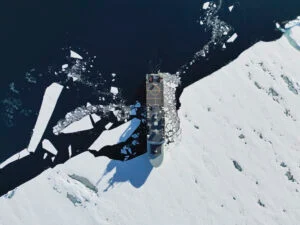
People & Culture
On thin ice: Who “owns” the Arctic?
As the climate heats up, so do talks over land ownership in the Arctic. What does Canadian Arctic Sovereignty look like as the ice melts?
- 4353 words
- 18 minutes
This article is over 5 years old and may contain outdated information.
Environment

For two days the train rumbled north from Winnipeg through rain and drear toward Churchill. With Manitoba’s prairie and boreal forest behind, the final morning found it crawling under bright sun over a flat expanse constellated with raised clumps of willy-nilly trees, a leitmotif that would last the day as the train traversed the muskeg surrounding Hudson Bay.
To the right ran an older, abandoned track. In places it disappeared underwater, in others it was subsumed in the land — grown over with sphagnum, willow and Labrador tea. In a few spots the land itself had vanished, sinking from sight along with the rail ballast to leave tracks and ties hanging mutely in space. Collectively, this suggested the miraculous — and tenuous — nature of the passage, reinforced when the train slowed to 20 kilometres per hour for the final hours of the journey. This pace, passengers were informed via crackling intercom, ensured that the train remained safely atop rails warped annually into a low-grade roller coaster by the freeze-thaw of permafrost. The book I was reading, E.C. Pielou’s After the Ice Age, identified the trees as black spruce and tamarack, noting how these “drunken forests” (anemic trunks leaned randomly in every direction) resulted from the alternate up-thrust and subsidence of frozen soil. This same interplay of substrate, climate, water and ice was responsible for the piebald landscape of much of the Arctic, in which freeze-thaw cycles concentrated ice at the surface and sorted soil particles into raised shapes outlined by shallow, rock-filled ditches. Although that scale was best viewed from the air, its fractal pattern repeated in microcosm as hummocky patches of moss visible from the train.
This slow-motion lesson in the dynamic nature of permafrost seemed entirely apropos. After all, I was travelling to Churchill to meet a scientist studying permafrost’s quickening disappearance.
***
Be it continuous, discontinuous, sporadic or isolated, permafrost covers about a quarter of the Northern Hemisphere, some 22.8 million square kilometres: 50 per cent each of the land masses of Russia and Canada; 22 per cent of China; and 82 per cent of Alaska (around 15 per cent of total land mass in the continental United States). Furthermore, almost 90 per cent of circumpolar peatlands that formed after the last ice age some 10,000 years ago are currently sequestered in permafrost; of these, the Hudson Bay Lowlands of northern Manitoba, Ontario and Quebec comprise one of the largest such continuous regions. These numbers are relevant to global climate-change scenarios and Canada’s role in them in particular because organic matter trapped in permafrost represents 50 per cent of the global carbon pool below ground, or four times the amount of carbon released from all human activities since 1850. Should significant areas of permafrost thaw and release even a fraction of this carbon as greenhouse gases (GHGs), scientists warn it will create a feedback loop that could turbocharge the rapid changes to climate we’re already experiencing.
So, first the bad news: the permafrost is already thawing; it’s widespread, accelerating and irreversible. Though not as sexy in a short-term news cycle as a fracturing Antarctic ice shelf, a record Alaskan heat wave or a catastrophic Atlantic storm, the process of millions of square kilometres of frozen soil becoming dangerously squishy is well underway. With it comes visible effects on the ecology, hydrology and landscapes of the North, as well as environmental, food and infrastructure concerns for communities.
Now, the good-ish news: studies are revealing the complex nature of permafrost loss, and while serious concern remains, it may not be quite the ticking time bomb some have advertised. Instead, permafrost loss is likely just another phenomenon of global warming to which we must pay close attention, adapt and seek redress.
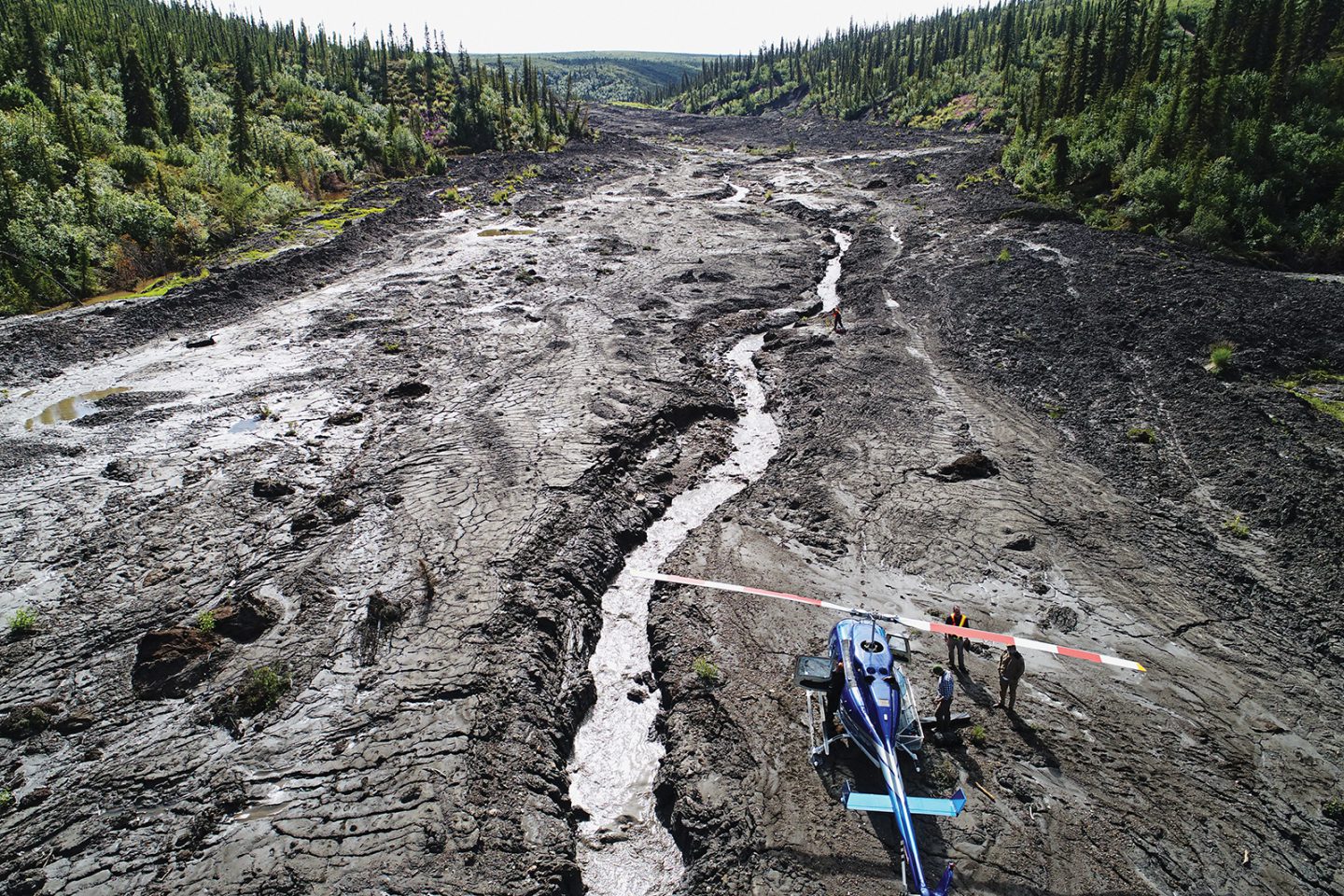
The scientist I met in Churchill was Peter Kershaw, a retired University of Alberta researcher and specialist on human disturbances to both tundra and forest. Kershaw had monitored ecosystem response to permafrost change near Churchill for more than 15 years, and was the principal investigator in a 45-year study that also included several sites in the Selwyn and Mackenzie mountains, N.W.T. He was monitoring both the declining status of permafrost and poleward migration of the treeline. Vacationing volunteers like myself — keen to see first-hand how global warming was unravelling the planet’s natural systems for storing carbon — delivered the significant people power required for his work.
I spent a week kneeling on the tundra amid clouds of mosquitos, wielding a magnifying glass to find tree seedlings no higher than the spongy moss they sprouted in and measuring annual growth on larger, previously marked trees. Evening presentations filled with graphs, charts and before-and-after photos offered a woeful litany of spiking temperatures, retreating glaciers, shrinking sea ice and changing snow cover. None of this was news save for the magnitude of these phenomena, all of which pointed to rapid, unidirectional climate change: it was warming everywhere, double speed in the Arctic and faster still below ground. This makes it clear there is more to permafrost than the one-dimensional concept the name implies.
Permafrost’s simple definition — rock or soil that remains at or below 0 C for at least two consecutive years — is where the simplicity ends. Permafrost consists of an active layer of variable thickness that thaws and refreezes each year, and sits atop a deeper, more permanent layer. The distribution of permafrost on a landscape is recognized as continuous if it covers 91 to 100 per cent of the area, discontinuous if that coverage is 51 to 90 per cent, sporadic if it’s 10 to 50 per cent and isolated if it’s less than 10 per cent (as with much of alpine permafrost). Permafrost can range from dry, with low water content, to ice-rich, where the ice content exceeds the saturated moisture capacity of the soil. The latter case of excess ice creates many of permafrost’s marquee features: interconnected ice wedges that form in vertical cracks to create polygonal shapes on the land; the distinct, conical ice-cored pingos common to the Mackenzie Delta; the segregated ice lenses that underlie peat-mound structures such as palsas.
Rapid thawing of ice-rich permafrost causes the ground to subside in various ways; these processes, known as thermokarst, see peatlands collapse into watery craters, as well as slumping, landslides and the enlargement (or occasional draining) of lakes.
Kershaw asserted how the active layer was warming considerably and, as a result, expanding to release more GHGs, such as carbon dioxide and methane. The permanent layer, down to 10 to 20 metres, was warming at a slower rate. A good deal of permafrost is deeply buried (more than a kilometre in parts of Siberia), so few expect it to ever release all its stored carbon; models generally suggest that at best, 10 to 20 per cent might escape in the future under even the most egregious emissions scenarios. But there’s a problem with the models.
My Churchill trip was in June 2012, and the six years since have seen the Earth’s five warmest years on record. Recent observations in Alaska and Siberia show the active layers to be warming far faster than the models predicted. Supporting this, a landmark 2017 study published in the journal Nature Climate Change looked at the rate at which permafrost actually thawed between 1960 and 1990 and found it was about 20 per cent more sensitive to warming than suggested by models.
This highlights limitations in the models currently used to forecast future climate scenarios — they simply can’t capture all of the nuance involved in major changes to permafrost. “Divergence between some of the best models in the world is huge, but there are no simple answers as to why,” says Antoni Lewkowicz, a professor in the department of geography, environment and geomatics at the University of Ottawa and president of the Canadian Permafrost Association.
Lewkowicz is a doyen of Canadian permafrost science, having worked across the North since 1976, from Labrador to the Yukon to the High Arctic. “Permafrost loss is an incredibly complicated system with many moving parts. We explore it mostly through modelling and site-specific studies, but we’d love to scale that up.”
Lewkowicz wonders how much carbon is actually there, how mobile it is and if some will be absorbed by plants. He notes that parts of the tundra are already greening — a de facto uptake of carbon — but that the resulting shrubs also deepen the snow layer, which can cause further warming that would release more GHGs. “Some changes are happening faster than expected, and they’re not trivial, but they also don’t seem to be catastrophic,” he says. “We need to do more work on this because to achieve climate goals we’ll ultimately need to include permafrost loss and consequent carbon release in our calculations.”
Though studies that point to climate calamity tend to grab headlines, the consensus view in keep-calm Canada seems to follow the Lewkowicz doctrine of definite but gradual effects. “Permafrost distribution across the North is like a jigsaw puzzle,” he says. “The top three rows — continuous permafrost — are complete, the next three rows incomplete, but displaying maybe 80 per cent of the picture, and at the bottom — the southern fringe of discontinuous permafrost — you have straggling pieces that are slowly being removed.”
David Olefeldt, an assistant professor in the faculty of agricultural, life and environmental sciences at the University of Alberta who studies carbon cycling in boreal and Arctic wetlands, agrees. “We’ve more or less ruled out any kind of disaster scenario, but we’re getting lots of information that it will nudge the climate,” he says. “In layman’s terms, it’ll be like adding another Germany or U.S. to the mix of atmospheric GHG sources. On its own, thawing permafrost isn’t sending the climate anywhere it isn’t already going, but it needs to be taken seriously. It’s still up to us how we manage future emissions — our choices haven’t been taken away from us.”

Landslides caused by heavy rains in September 2017 scar the Caribou Hills near Inuvik, N.W.T. (Photo: Northwest Territories Geological Survey and Aurora Research Institute)
In Churchill all those years ago, my days were spent at “tree islands” — clumps of tamarack and black spruce that were the very vanguard of the treeline. In this harsh environment, a 10-centimetre-high tree could be eight years or older; a waist-high arbour anywhere from 50 to 100 years old. Some tree islands were close to water, offering additional lessons. Along the shore of Ramsey Lake, active-layer mounds had been pushed up by ice, and polygonal bottom patterns formed through cryoturbation, in which ice sorts substrate particles by size to create geometric shapes. Nearby, an aggrading “polygonal peat plateau” (a lovely alliteration hoisted into the air by permafrost) offered an up-close-and-personal moment with ice wedges, veins of solid ice running through the peat. The volunteers all wanted to touch them, perhaps because these were the very phenomena disappearing from the landscape.
I came away with a clear message: the permafrost undergirding much of the Canadian North was critical to understand, both by current occupiers and those that hoped to develop the areas. “There are dire implications for everything from pipelines to hydroelectric dams to coastal communities and transport corridors,” Kershaw had said. “Added to the impact on northern ecology — enhanced nutrient cycling, treeline migration, loss of polar bear den sites and other things — we have a very interesting story.”
As Kershaw was shortly retiring, curating that story would fall to his former student, Steven Mamet, now a research associate in biogeography at the University of Saskatchewan. Mamet has taken over as principal investigator on the Mackenzie Mountains project and shares the same position on the Churchill study. His update wasn’t surprising. “Air temperatures in the Mackenzie Mountains have increased by 1?C over three decades, but the permafrost is warming at a rate of up to 1.3 C per decade, roughly three times faster.”
Temperatures aren’t the only metric; surface structures are also disappearing. “You need multiple indicators to really understand the extent of change on the landscape,” he says. “If we only had data for thaw depth, we wouldn’t have been able to quantify the big changes caught through repeat ground and air photography. Comparing images from 1942 and 2016 shows a 96 per cent loss of area for palsas in the Mackenzie Mountains. So, these will be gone in our lifetime.”
Conversely, and again demonstrating the uneven effects of permafrost loss, treeline movement has stagnated in the Mackenzie region since the 1950s due to what Mamet calls “shrubification” (increased shrub growth), while in Churchill that line continues plodding north at a metre per year, its composition changing as more tamarack moves in. “We’re entering an era of rapid change for many ecosystems — as well as northern communities,” says Mamet. “Places like Tuktoyaktuk are seeing huge coastal erosion from a double whammy of sea-level rise and increasing temperatures. You only have to read the news.”

The news: as permafrost thaws, the north slopes of Siberia, Alaska and Canada crumble into the Arctic Ocean. In some cases, forcing entire towns to be moved. In Siberia in 2016, thawing permafrost exposed a reindeer carcass infected with deadly anthrax bacteria, killing a 12-year-old boy and sickening numerous others. Also in Siberia, measurements show increased rates of methane release from permafrost below the Arctic seabed. Lakes across the Canadian Arctic are melting up to a day earlier per year, according to scientists at the United Kingdom’s University of Southampton. And in Inuvik, N.W.T., buildings had to be demolished when foundations shifted due to thawing permafrost, yet another bellwether for citizens who needn’t travel far to see drained lakes, hillside slumps and thermokarst craters.
Steve Kokelj, a permafrost scientist with the Northwest Territories Geological Survey and former student of Lewkowicz, mans Canada’s permafrost frontline, curating information collected by northern jurisdictions that can help in the design of roads and infrastructure, and putting it into a usable form. This work is particularly relevant given the Inuvik Tuktoyaktuk Highway, which opened in November 2017.
“I didn’t work for the territory when the road was designed, so I wasn’t involved,” recalls Kokelj. “But once I came on board I saw what an amazing R&D opportunity it was for the scientific and engineering community: it’s built across challenging terrain and environmental and climate gradients, base materials vary across the corridor and it was built in the frozen state. It’s a focal point for understanding how the environment and infrastructure behaves under a range of conditions; in coming years we’ll know what we can and can’t successfully do.”
Kokelj’s role also sees him managing risk-mapping that can quickly become obsolete given the rapidity of climate change. For instance, in a section of hills adjacent to the Mackenzie Delta, heavy precipitation caused 20 landslides in 2009, he says, then 80 landslides in the same area in 2017. There’s a need to know which areas will be at greater risk.
“What we grapple with here in the North is that the whole discipline of permafrost study is relatively new, yet it’s the glue that holds the landscape together,” he says. “We’re still playing catch-up a little bit on permafrost, so we’re still overwhelmed up here and will be for a while in coming up with solutions. But the North will be key to figuring things out.”
Lewkowicz concurs. “One of the most important things for Canada in the near future will be our northern capacity, having and relying on researchers in the North and people who live there and deal with permafrost problems. This includes food security issues for Indigenous Peoples whose traditional sustenance through hunting and fishing is being affected.”
Whether we hold the line on planetary warming or not, all agree on one thing: thawing permafrost will be another climate change challenge for decades to come. “It’s like a long freight train,” offers Lewkowicz. “It may be moving slowly, but it’s not going to stop very easily.”
Are you passionate about Canadian geography?
You can support Canadian Geographic in 3 ways:

People & Culture
As the climate heats up, so do talks over land ownership in the Arctic. What does Canadian Arctic Sovereignty look like as the ice melts?
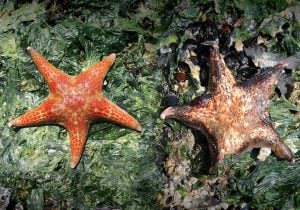
Environment
As the impacts of global warming become increasingly evident, the connections to biodiversity loss are hard to ignore. Can this fall’s two key international climate conferences point us to a nature-positive future?
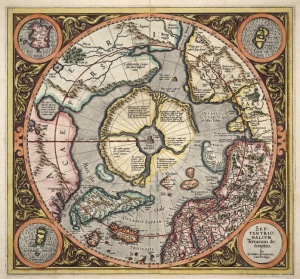
People & Culture
In this essay, noted geologist and geophysicist Fred Roots explores the significance of the symbolic point at the top of the world. He submitted it to Canadian Geographic just before his death in October 2016 at age 93.
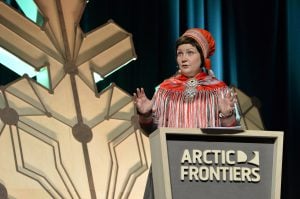
Environment
The uncertainty and change that's currently disrupting the region dominated the annual meeting's agenda